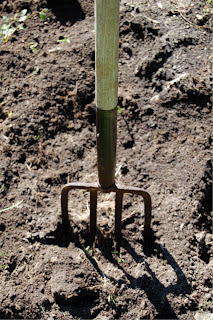
We had such a great response to my blog last week about ‘Lawn Care’ that I thought I would expand on ‘Lawn Care #101’ here. There are many unanswered questions that I hope to clarify for you this week.
Why fertilize my lawn?
Under normal circumstances you would enrich and enhance the soil around the roots of the permanent, perennial plants in your garden. I recommend that you spread 2 cm of finished compost or organically-enriched soil over your entire garden each spring or fall. You may dig this in with a garden fork or wait for the earthworms to pull all of that good stuff down into the top soil.
‘Feeding the soil’ works well for your garden, but this is generally not practical for your lawn.
I recommend a fertilizer that has high nitrogen content (the element that your lawn craves the most come spring) and has a slow release nitrogen ingredient in it. I recommend Golfgreen (20-0-5) because it has the highest and most sophisticated content of slow release nitrogen of all national brands.
Fertilize once in early spring, again in early summer and (most importantly!) a final application before the snow flies in late summer.
Why don’t you recommend other national brands?
Other national brands like Vigoro, So Green, and Nutrite are excellent products, just not as good as Golfgreen. The most important thing is that you apply a quality product this time of year to take full advantage of the early season growth activity of your lawn.

What do the 3 numbers on the bag mean?
All 3 numbers refer to the percentage of an element found inside of the bag, measured by weight.
The first # is Nitrogen.
The second # is Phosphorous.
The third # is Potash.
Each of these ‘elements’ represents one of the primary ‘food groups’ for plants. Different plants require different amounts of each of these elements. In spring and early summer your lawn responds best to nitrogen. Potash encourages strong roots and enables your grass plants to use the nitrogen.
How do I get rid of earth worms that are making mounds of earth in my lawn?
This is always an awkward question for me to answer as I am a great fan of earth worms – ‘the foot soldiers of the garden’ as I refer to them. But I acknowledge that they can make for a bumpy lawn, when their castings erupt on the surface of the soil at the root zone.
I suggest that you ‘even out the mounds’ and ‘fill in the valleys’ with triple mix. Buy as much as you need (a few cubic yards or a truck load?) from a reliable supplier – keeping in mind that not all suppliers will send you the best quality stuff.
Triple mix is an equal combination of screened top soil, composted manure and peat. Spread it with a shovel and rake with a straight, hard rake smooth, being mindful of creating as smooth a surface as possible.
Over Seed Your Lawn.
As mentioned in my previous blog (2 weeks ago) this is a great time of year to thicken your lawn with fresh grass seed. You will compete many weeds out of existence and produce an even, thick lawn by Fathers Day if you do it now. Don’t worry about pending frosts or even snow … no harm.
If you are spreading triple mix over your lawn as described above, now is the perfect time to sow grass seed at the rate of one pound for every 400 sq. ft (1/2 kilo per 10 sq. metres). Apply the seed by hand, letting it roll off of your index finger as you move your wrist or arm from side to side slowly.
Rake smooth.
Roll with a lawn roller filled only 1/3 full with water or step on it with flat soled shoes (if it is not a big area).
Water and fertilize.
You can sow grass seed and fertilize on the same day, unless you are using a fertilizer with a weed control product in it. A ‘weed and feed’ will need about 6 weeks before you sow grass seed and a crabgrass preventer will vary depending on the brand. Follow directions on the bag.
Just laid fresh sod last fall or this spring?
If you are laying sod or starting a new lawn from seed use a ‘lawn starter’ fertilizer with a formula like 10-20-5. The high proportion of phosphorous will encourage strong young roots. Apply same day if you like.

If you laid fresh sod last spring or earlier, use Golfgreen Lawn Fertilizer or another national brand.
Keep your knees dirty!
Mark





